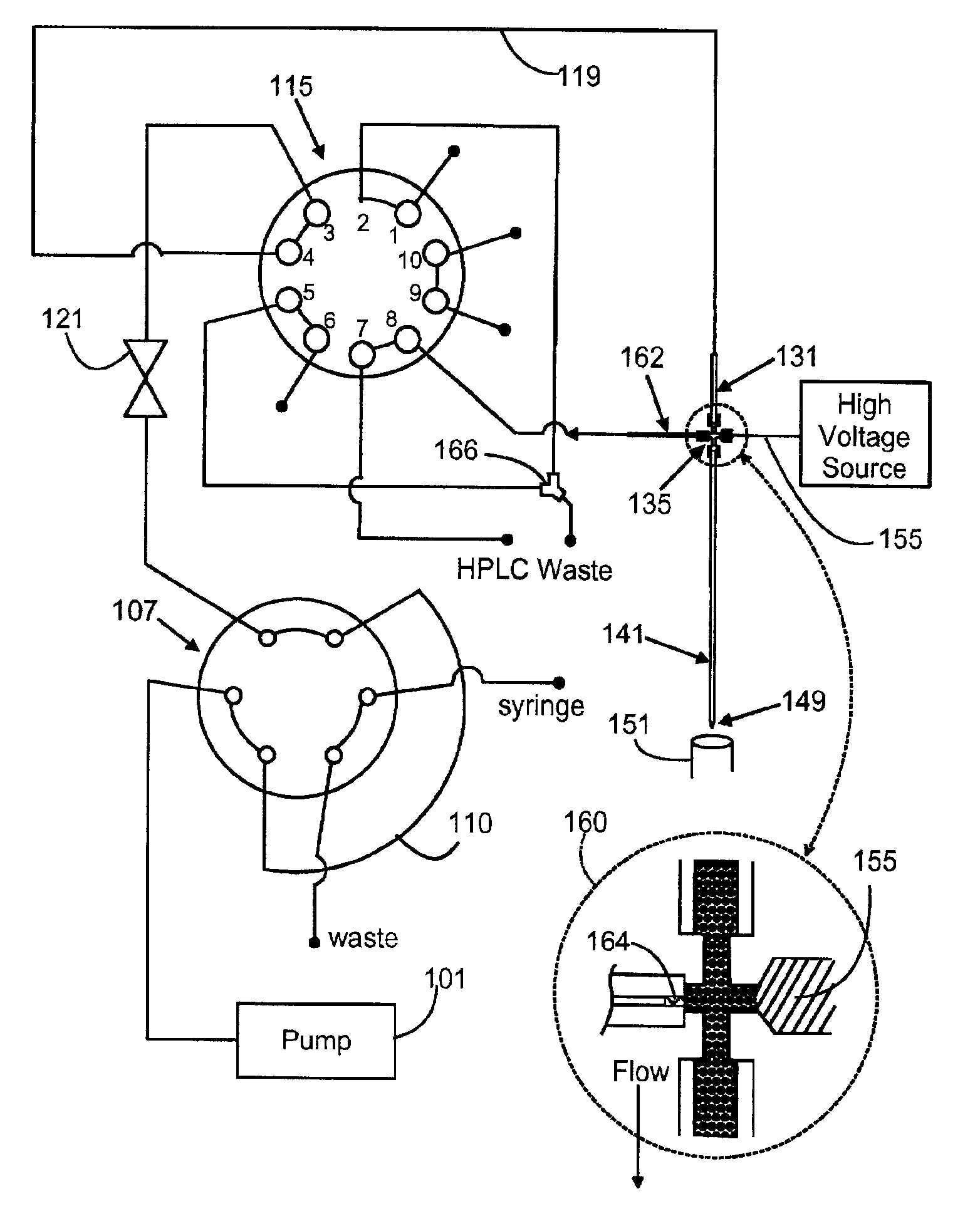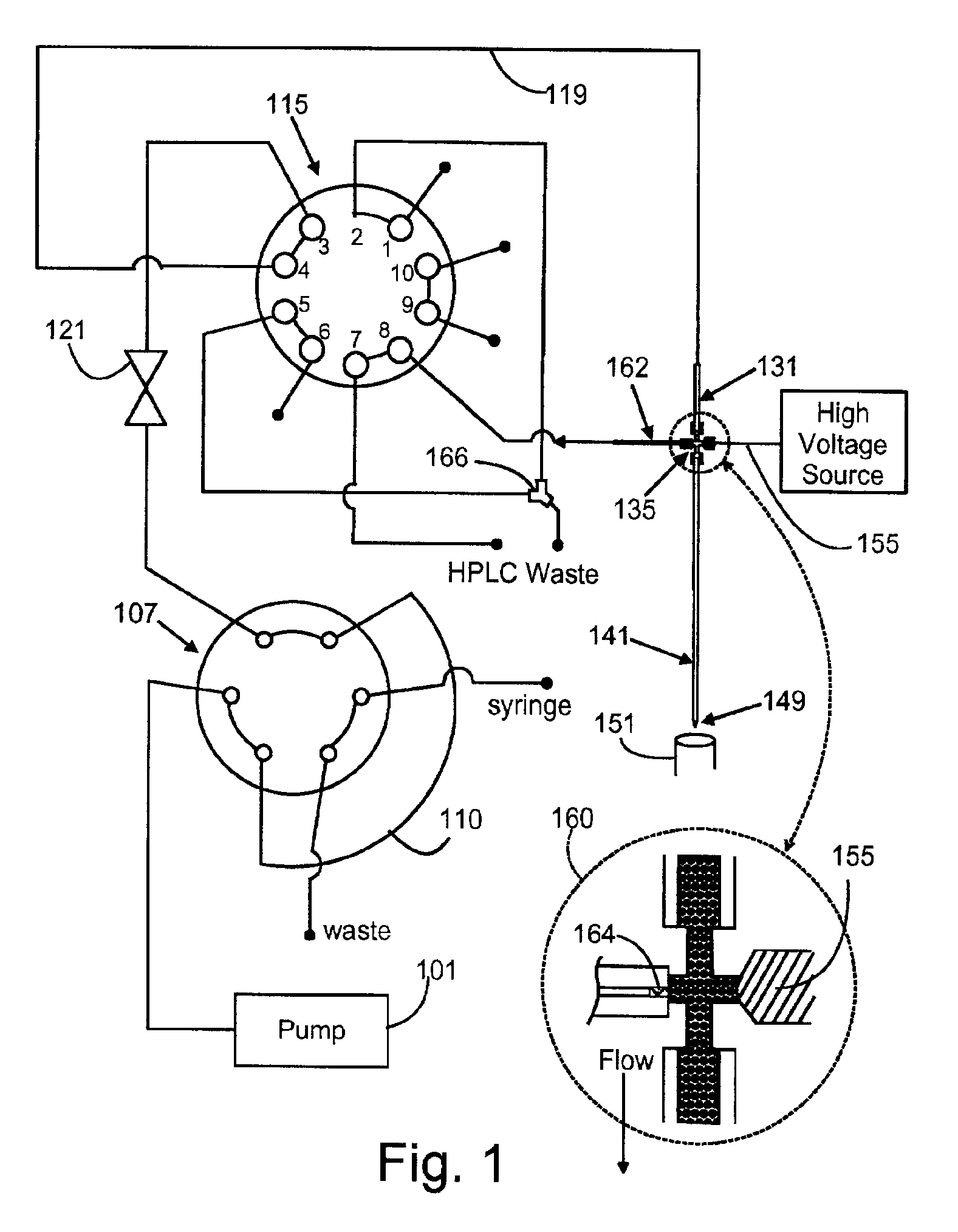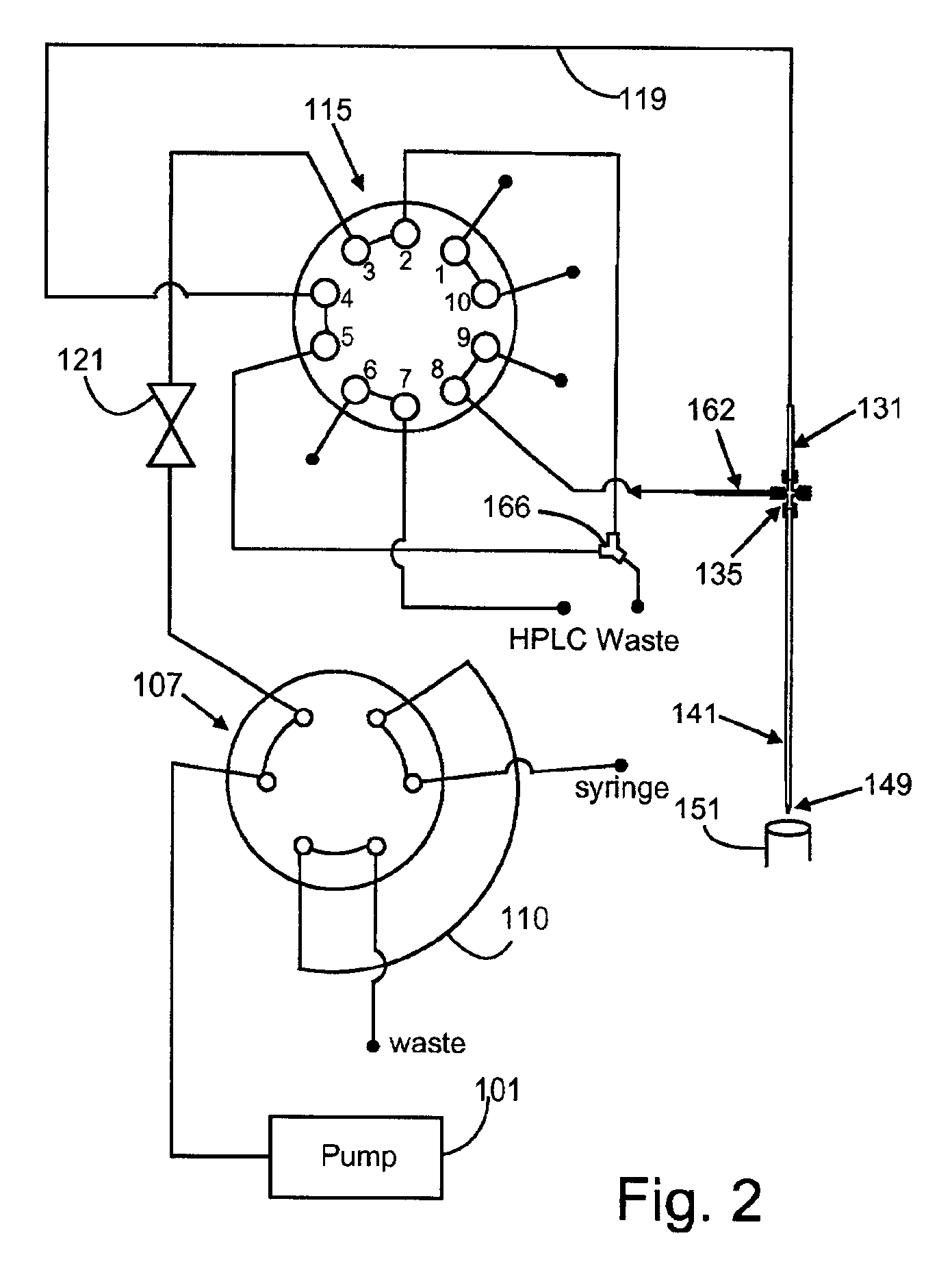Automated capillary liquid chromatography small volume analysis system
a liquid chromatography and automatic technology, applied in the field of biochemical analysis methods and apparatus, can solve the problems of large extra-column volume, low flow rate of columns, and other problems
- Summary
- Abstract
- Description
- Claims
- Application Information
AI Technical Summary
Benefits of technology
Problems solved by technology
Method used
Image
Examples
Embodiment Construction
[0019]The greatest sensitivity for structural characterization or identification of biomolecules can be obtained by performing liquid chromatography (LC) analyses at low nanoliter flow rates using on-column sample-loading, separation, and detection. At these flow rates an analysis column of 100 micron or smaller diameter is utilized to provide chromatography fractions on the order of 200 nL and smaller. To allow on-column analyte enrichment and to utilize larger sample volumes, typically 1 to 100 microliters, the column consists of a porous bed which promotes retention of analytes during the sample loading step. To allow automated liquid sample-handling stations (autosamplers) to perform the loading step, a short column must be used which permits a maximum flow rate in the range from 0.5 to 50 microliters / minute, and preferably between 5 and 50 microliters / min, while samples are transferring to the column (trap) and to allow non-retained solutes to be washed from the trapping column...
PUM
 Login to View More
Login to View More Abstract
Description
Claims
Application Information
 Login to View More
Login to View More - R&D
- Intellectual Property
- Life Sciences
- Materials
- Tech Scout
- Unparalleled Data Quality
- Higher Quality Content
- 60% Fewer Hallucinations
Browse by: Latest US Patents, China's latest patents, Technical Efficacy Thesaurus, Application Domain, Technology Topic, Popular Technical Reports.
© 2025 PatSnap. All rights reserved.Legal|Privacy policy|Modern Slavery Act Transparency Statement|Sitemap|About US| Contact US: help@patsnap.com



